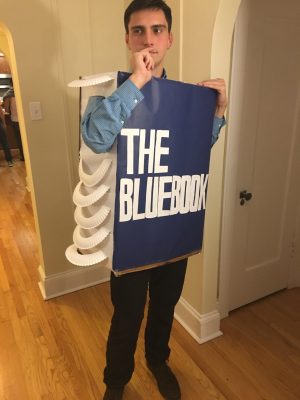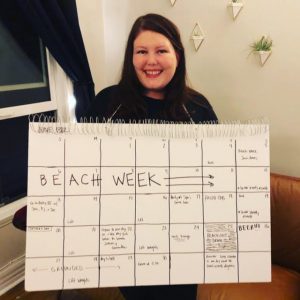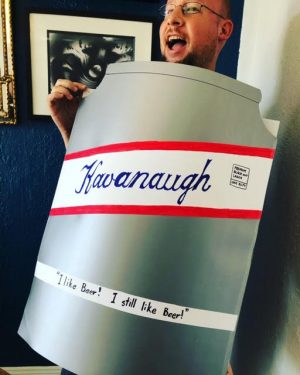The prospect of advances like AI-powered robot lawyers may grab the headlines, but today’s legal pros would also be well-served by refining their use of the tech of the early 2010s.
This is particularly so when it comes to pandemic-era communications, according to several “ask the expert” speakers at the recent Legal Geek technology conference, a live online event focused on innovation in the industry that also featured new product pitches and other offerings over the course of two days.
John Hand, a London-based legal counsel at the Mercedes-AMG Petronas Formula One team, for example, said he would “definitely” be interested in collaborating with law firms over chat-based tools like Slack during the course of a full project — particularly when a lack of ongoing communication can sometimes lead to law firm work products that don’t align with client needs.
At his organization, Hand said, chat-based tools were virtually absent back in February, but now they’re commonly used.
“It just shows the change in working styles that’s happened over the past six months or so,” he said, “and it’s brilliant that that means that others who were otherwise reluctant are now very much on board with that as a concept.”
Hand later added that he also “would very much welcome” client portals that allow access to law firm information without needing to make calls or send emails to outside counsel to ask for an update.
Similar observations about the growing need for refined, consistent communications were common on the main stage of the virtual event. Here, we present a few takeaways from the featured speakers.
Building the Ferrari
At a macro level, multiple speakers advised those implementing new legal technology to consider starting small.
Unilever’s general counsel, Wei Ling Lim, and head of legal operations, Helen Loots, described their process for embarking on tech projects as winning hearts and minds by demonstrating utility across departments, while applying an agile approach to project rollouts that enables responsiveness to any changes that may arise.
“The analogy I recently heard from one of our colleagues is that you can’t really jump into building a Ferrari,” Loots said. “You start small with the agile approach. From a bike, move into more sophistication, and keep the end goal in mind of where you want to get to and keep that vision as well.”
A similar phenomenon applies to the world of legal tech startups, according to Srin Madipalli, a former Herbert Smith Freehills solicitor who founded a technology company that was ultimately acquired by Airbnb.
While many legal tech startups are focused on trying to sell their products to the world’s largest law firms, he said, the goal of building scale may be better achieved by first targeting smaller firms, which can have faster decision-making cycles and lower barriers to implementation.
“If you’re trying to get your software into a big firm, I imagine that it’s a long, old slog,” he said.
Walking the Virtual Halls
Has your organization hired a “head of remote”? Are you starting your Zoom meetings with a “warmup” or “icebreaker”? Are workers still expected to keep set hours?
Speakers at the conference described a variety of approaches to managing a remote workforce — a task that often dovetails with technology needs.
Philip Merrills-Dearn, Twitter’s head of legal for Europe, the Middle East, and Africa, noted that his company was one of the first to go to a fully remote workforce in 2020. From the outset, it polled its workers to determine the kinds of challenges individuals were facing and how the company could help.
The organization aimed to take an “empathetic” approach to this new set-up, Merrills-Dearn said, implementing measures to support its workforce that include compulsory days off in which everyone took the same day so emails would not pile up in their absence.
While the nature of legal work leaves law firms similarly well-positioned in the ability to conduct business remotely, a virtual workforce can present different challenges in an industry that has long prized in-person meetings and collaboration.
Susan Bright, the UK managing partner for Hogan Lovells, praised the collaboration possibilities provided by the physical space at the firm — for instance, its former library, which has been converted into a lounge where clients and lawyers could work together.
To adjust to the remote environment, many of Bright’s colleagues have “reinvented the hour,” she said, shortening it to 50 minutes to prevent Zoom fatigue. Additionally, like many of her peers at other firms, Bright is seeking to find the future’s “new equilibrium,” in which lawyers can collaborate and work together in person while also having more flexibility to work in different ways.
“I’ve realized how much information I imparted and I received by walking the corridors and sticking my head around somebody’s door, and the coffee machine chat,” she said. “And I haven’t found the app for that.”
While there may not be an app just yet, some new technologies — and even new career paths — are specifically aimed at addressing this need, which was expressed by several speakers.
Laila von Alvensleben is the head of culture and collaboration at Mural, an online workspace that allows for visual collaboration.
Like Bright, she noted that remote work presents major challenges to maintaining workplace culture, as individuals no longer bump into their colleagues in the hallway.
“I think we need to be more intentional about it as companies,” she said, adding that there are ways to build culture remotely.
These can include running workshops internally and for external clients, starting meetings with check-in questions dubbed “warmups” or “energizers,” holding virtual retreats, or even hiring a professional who focuses on strengthening remote teams.
But while companies ought to be deliberate about maintaining connections among employees, micromanaging workflow isn’t the path to productivity.
“What I’ve seen in distributed teams is that usually the best, most efficient teams focus on outcome rather than time, so it’s not so much about how much time you spent, but really on whether you’re getting the job done,” von Alvensleben said.
“All of that, at the end of the day boils down to having trust within your company culture.”
Learning to Code
Amid today’s historic uncertainty, ensuring you are operating at the cutting edge of tech innovation is likely a wise career move, even for experienced lawyers.
Susan Hackett, the former general counsel of the Association of Corporate Counsel and current CEO of the consulting practice Legal Executive Leadership, noted that when lawyers graduate from law school, they have a broad focus, but over time this gets funneled into a more and more narrow expertise. Now, she said, the challenge for senior lawyers is to move it the other way: becoming more agile and expansive in broadening a skillset.
“No one is suggesting that by learning ‘new law’ we’re asking lawyers to suddenly become carpenters, right?” she said. “We’re asking you to stay in your professional lane, but become more agile.”
And there are the non-legal careers in which a J.D. may provide an advantage as well.
In discussing the role of a legal background in entrepreneurship, Madipalli, the tech startup founder and former solicitor, may have added a new one to this list.
“A page of code is often similar in mindset and sort of underpinnings to a page of a contract,” he said, “in that it’s a set of instructions that are broken down to a really granular level.”
“I actually think lawyers can make really good coders.”
Jeremy Barker is the director of content marketing for Breaking Media. Feel free to email him with questions or comments and to connect on LinkedIn.








 Kathryn Rubino is a Senior Editor at Above the Law, and host of
Kathryn Rubino is a Senior Editor at Above the Law, and host of 














